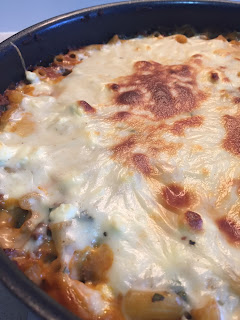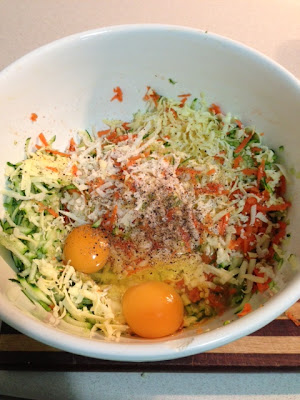Standard Dessert Sauces #1 - Anglaise
I thought I'd do a few different standard dessert sauces and get them out of the way. There are a plethora (I like this word!) of different sweet sauces you can make up to spice up any dessert you make.
All sauces are variants of Four classic sauces;
1) Milk or cream based sauces
2) Chocolate based sauces
3) Fruit based sauces
4) Sugar based sauces
Today I'll do Anglaise (milk), Ganache (chocolate) and Raspberry Coulis (fruit) as I've already done butterscotch in my Bread and Butter Pudding Recipe which is a sugar-based sauce.
(I'll do the hardest one first!)
You will need...
300ml full-cream milk
30gr caster sugar
3 egg yolks
1 vanilla pod, split in half
(for alternative flavours you can also use star anise and cinnamon)
Method...
1. In a large bowl, combine your egg yolks and sugar until they become a little lighter in colour.
2. Add the vanilla and milk in a heavy-based saucepan and slowly bring just to simmering point, then quickly remove from the heat so it doesn't scold and burn.
3. Stir with a wooden spoon for a minute to cool slightly, remove the vanilla pod, then carefully pour about 2 tablespoons of the warm milk to the eggs, mix with your spoon to dissolve the sugar**
4. Add your milky eggs to the rest of the milk and return to the smallest element on your stove top on the lowest heat, or alternatively, place in a metal bowl over a pot, half full with simmering water making sure the bottom of the bowl doesn't touch the water (called a water bath).
5. If you're new to this technique you may require a thermometer to keep the mixture at about 75 degrees celsius or 167 degrees fahrenheit. Otherwise you can use your keen eye to make sure that the cream remains at the right temperature (the perfect temperature should mean that the cream is not hot enough to steam, but just hot enough to begin to thicken the sauce)
6. The sauce will need continuous stirring with a wooden spoon, you may need to remove it from the heat if it starts to steam, but continue stirring delicately. The sauce is ready when it coats the back of your spoon, and if you run your finger along the spoon in a line, the line should remain there without the sauce running back too quickly. If you see little lumps forming you're on your way to scrambled eggs and you're best course of action is starting from scratch.
7. As soon as your sauce is at the correct consistency, remove it from the heat, and pour it through a sieve into a new bowl. Stir for another minute to cool it down and stop the cooking process (you can also do this by placing your bowl of angaise into a bigger bowl filled with ice- but you still have to stir it!)
8. Cover the top of your sauce with grease-proof paper to stop a skin from forming and pop in the fridge, only cover with glad wrap once its totally cooled. Or you can enjoy it while its still fresh and hot! OR... Once its cooled, you can put it into your ice cream churner to make your own deliciously rich vanilla ice cream!!
All sauces are variants of Four classic sauces;
1) Milk or cream based sauces
2) Chocolate based sauces
3) Fruit based sauces
4) Sugar based sauces
Today I'll do Anglaise (milk), Ganache (chocolate) and Raspberry Coulis (fruit) as I've already done butterscotch in my Bread and Butter Pudding Recipe which is a sugar-based sauce.
 |
| Picture from wiki |
(I'll do the hardest one first!)
You will need...
300ml full-cream milk
30gr caster sugar
3 egg yolks
1 vanilla pod, split in half
(for alternative flavours you can also use star anise and cinnamon)
Method...
1. In a large bowl, combine your egg yolks and sugar until they become a little lighter in colour.
2. Add the vanilla and milk in a heavy-based saucepan and slowly bring just to simmering point, then quickly remove from the heat so it doesn't scold and burn.
3. Stir with a wooden spoon for a minute to cool slightly, remove the vanilla pod, then carefully pour about 2 tablespoons of the warm milk to the eggs, mix with your spoon to dissolve the sugar**
4. Add your milky eggs to the rest of the milk and return to the smallest element on your stove top on the lowest heat, or alternatively, place in a metal bowl over a pot, half full with simmering water making sure the bottom of the bowl doesn't touch the water (called a water bath).
5. If you're new to this technique you may require a thermometer to keep the mixture at about 75 degrees celsius or 167 degrees fahrenheit. Otherwise you can use your keen eye to make sure that the cream remains at the right temperature (the perfect temperature should mean that the cream is not hot enough to steam, but just hot enough to begin to thicken the sauce)
6. The sauce will need continuous stirring with a wooden spoon, you may need to remove it from the heat if it starts to steam, but continue stirring delicately. The sauce is ready when it coats the back of your spoon, and if you run your finger along the spoon in a line, the line should remain there without the sauce running back too quickly. If you see little lumps forming you're on your way to scrambled eggs and you're best course of action is starting from scratch.
7. As soon as your sauce is at the correct consistency, remove it from the heat, and pour it through a sieve into a new bowl. Stir for another minute to cool it down and stop the cooking process (you can also do this by placing your bowl of angaise into a bigger bowl filled with ice- but you still have to stir it!)
8. Cover the top of your sauce with grease-proof paper to stop a skin from forming and pop in the fridge, only cover with glad wrap once its totally cooled. Or you can enjoy it while its still fresh and hot! OR... Once its cooled, you can put it into your ice cream churner to make your own deliciously rich vanilla ice cream!!



Comments
Post a Comment